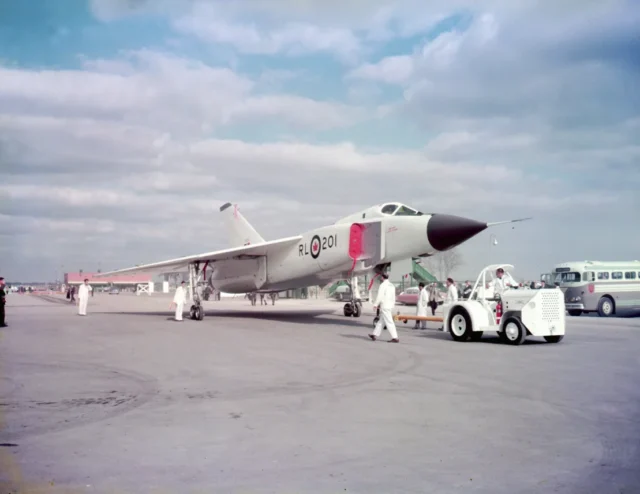Introduction
The Avro Arrow, once a beacon of hope for Canadian military aviation, has become one of the country’s most poignant stories of lost potential. Designed as a cutting-edge supersonic interceptor to defend against Soviet threats, the Avro Arrow’s abrupt cancellation left a lasting impact on Canada’s aerospace industry and national psyche.
The Vision Behind the Avro Arrow
A New Era in Aviation
In the 1950s, the Avro Arrow, officially known as the CF-105, was conceived to position Canada as a leader in military aviation and engineering. Its mission was to counter Soviet nuclear bombers that could potentially strike North America.
Strategic Military Needs
The Royal Canadian Air Force (RCAF) required a fast, high-altitude interceptor capable of reaching Mach 2 speeds and flying at 50,000 feet. This demand stemmed from the Cold War era’s escalating tensions and the perceived need to protect North American airspace from potential Soviet incursions over the Arctic.

Development and Promise
Early Development and Rollout
Development of the Avro Arrow began in 1955, spearheaded by Avro Canada, which had previously delivered the successful CF-100 Canuck. The Arrow was unveiled to the public on October 4, 1957, coinciding with the launch of Sputnik I, marking the dawn of the space age.
Advanced Design Features
The Avro Arrow was an impressive feat of engineering. Featuring a sleek delta wing design and a striking white livery, the aircraft was nearly 78 feet long with a wingspan of 50 feet. It was designed for a crew of two and boasted capabilities that matched or surpassed the era’s most advanced military aircraft.
The Dream Shattered
Changing Strategic Perceptions
Despite its promising design, the Arrow faced shifting strategic perceptions by the time it made its first flight on March 25, 1958. Military and political leaders began to believe that future conflicts would be dominated by long-range missiles rather than bombers, diminishing the perceived need for the Arrow.
Rising Costs and Political Climate
The escalating costs of the Avro Arrow project, combined with changing defense priorities, led to its downfall. On February 20, 1959, Prime Minister John Diefenbaker canceled the program. This decision resulted in the destruction of the existing aircraft and assembly lines, fearing they could become targets of Soviet espionage.
The Fallout
Economic and Industrial Impact
The cancellation of the Avro Arrow had severe economic repercussions. Thousands of jobs were lost, and Avro Canada eventually collapsed. The decision also stunted Canada’s aerospace ambitions, leading many skilled engineers to seek opportunities elsewhere, including NASA’s Apollo program.
The Legacy and Myths
The Birth of a Myth
The abrupt end of the Avro Arrow project gave rise to numerous myths and conspiracy theories. Some speculated that the United States had influenced Canada to terminate the program to prevent the Arrow from surpassing American aircraft. Others believed Canadian intelligence deliberately skewed threat assessments to justify the cancellation.
Intelligence and Decision Making
In 2023, archival documents revealed that intelligence reports from the late 1950s suggested the Soviet bomber threat was less severe than previously thought and that Soviet efforts were shifting towards missile technology. These findings influenced the decision-makers, who concluded that the costly Arrow program was no longer justifiable.
Enduring Impact and Cultural Significance
Continued Fascination
Despite its cancellation, the Avro Arrow continues to captivate Canadians. In 1997, the CBC produced a TV miniseries about the aircraft, and various models of the Arrow have been preserved in museums across the country. The Arrow’s story symbolizes a lost era of Canadian innovation and ambition.

Rediscovery of Test Models
In 2018, a significant discovery reignited public interest in the Avro Arrow. After a year of searching, sunken Arrow models were recovered from Lake Ontario. These models, used in mid-1950s flight tests, were found substantially intact and are now displayed in the Canadian Aviation and Space Museum.
Conclusion
The Avro Arrow’s story is a poignant reminder of what could have been for Canada’s aerospace industry. It reflects a period of ambition and rapid technological advancement, and its legacy endures as a symbol of Canadian ingenuity and the high cost of shifting political and strategic priorities. The Avro Arrow remains embedded in the national consciousness, representing both a missed opportunity and a testament to Canadian potential in aviation and engineering.











